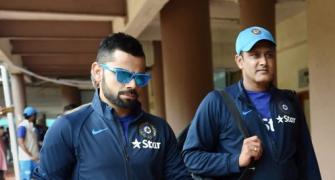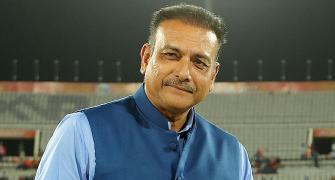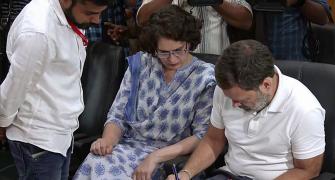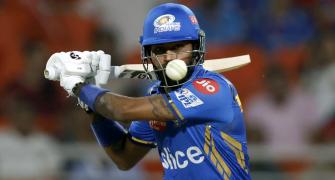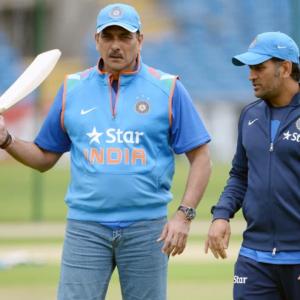'This World Cup is likely to be much more a clash of plans than of talent,' says Devangshu Datta.
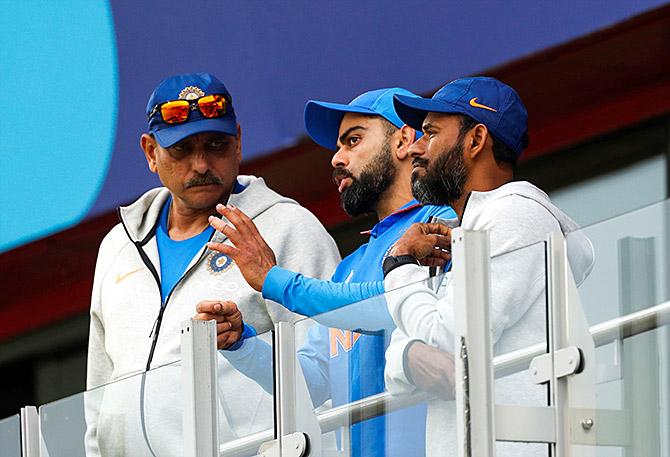
Team games tend to be driven by coaches, psychologists and back-room statisticians.
American football is an extreme example. Squad formation and team selection are driven by statistics.
The number-crunching indicates the best bang for the buck and the optimal team composition.
The coach decides on strategy (again relying on stats), and calls every set-piece play. Basketball is similar.
Football and hockey are more free-flowing but even there, strategy is coach-driven. Captains play symbolic roles.
Cricket is an outlier. This is partly because it is an unusual format, as a sequence of head-to-head set-pieces.
Two persons are centre stage; the other eleven play supporting roles.
An individual, batsman or bowler may have far greater influence than a Messi or a Magic Johnson.
The second reason why captains dominate cricket strategising is tradition.
Tradition endows the captain with responsibility for on-field decisions.
There is no apparent reason why a coach cannot use technology to ring bowling changes, tweak field settings, or ask batsmen to change pace.
Indeed, the 12th man does pass on instructions, in a time-honoured, cumbersome way.
But it caused huge controversy when Hansie Cronje wore an earpiece on-field to confer with Bob Woolmer back in the 1999 World Cup and it's never happened since.
Still, the role of statistics and coaching has increased exponentially.
Squad formation is driven by number-crunching in T20.
The opposition is studied in detail to figure out the strengths and weaknesses.
Bowling and fielding changes are micro-managed, with games sliced up over to over.
Weather, pitch and historical performances are analysed to target 'par scores' and to plan chases.
Batsmen bat to a plan, bowlers bowl to a plan.
Field settings are micro-managed to cut down every specific batsman's shot-making preferences.
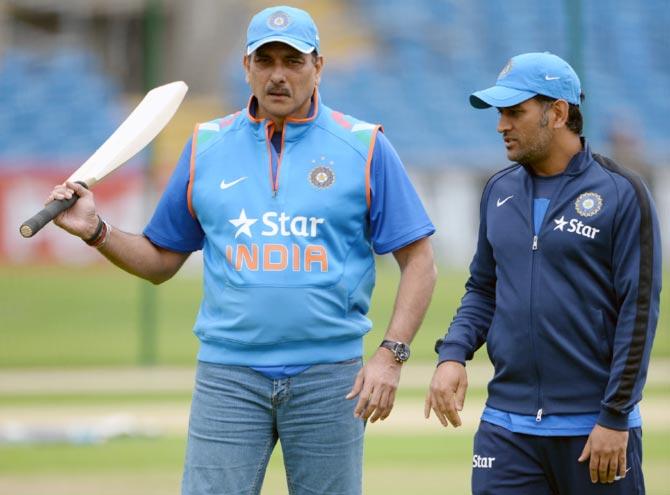
Traditionally, selection involved picking the four best bowlers, the best 'keeper and the best five batsmen plus all-rounder, or the best six batsmen.
But modern limited-over selection is driven by strategy.
A model that assesses 350 as par score will also indicate playing two sloggers who bowl, rather than a quality bat and a quality bowler.
A team may even gamble on just three specialist bowlers.
A team may play an average off-spinner to target opposition lefties, rather than play a quality left-arm spinner.
A team may open with a spinner to target an opener shaky against spin.
This sort of use of 'sabermetrics' started with baseball many decades ago.
American baseball teams found better value for money via number-crunching, rather than 'scouting'.
Statisticians could find undervalued players, who slotted together better as teams.
Number-crunching also helped teams develop better playing strategies.
Cricket inevitably went the same way once the money flowed in.
Given that video analysis is now easily married to silicon muscle, fine-tuning has improved.
All the IPL teams, and most of the World Cup squads, include statistical geeks, and sports psychologists providing inputs.
Some of this analysis creeps into the public domain, as stats and graphics start streaming on to viewers' screens.

The 2019 champions, whoever they are, will be deserving winners. The format is among the fairest that can be devised.
The Australia-New Zealand 1991-1992 World Cup had a similar format, but it was vitiated by a really stupid rain-rule.
There is very little to choose between four squads, or even five, in terms of skill.
There will probably be at least one team making the semis on the basis of a better run rate, and any one of the semi-finalists will be good enough to win the trophy.
The team that wins will be the one that has picked the optimal strategy, deployed the cleverest tactics, and executed plans with the least nervous hiccups.
Finding the right plans will, of course, go beyond statistics in requiring an understanding of what each player can do, and maximises the team's collective strengths and targets the opposition's weaknesses best.
Although the captains retain lots of agency, the coach and the backroom will contribute far more than ever before to this process.
This World Cup is, therefore, likely to be much more a clash of plans than of talent.
WC 2019 might well be remembered as the one where the coaches took over.



